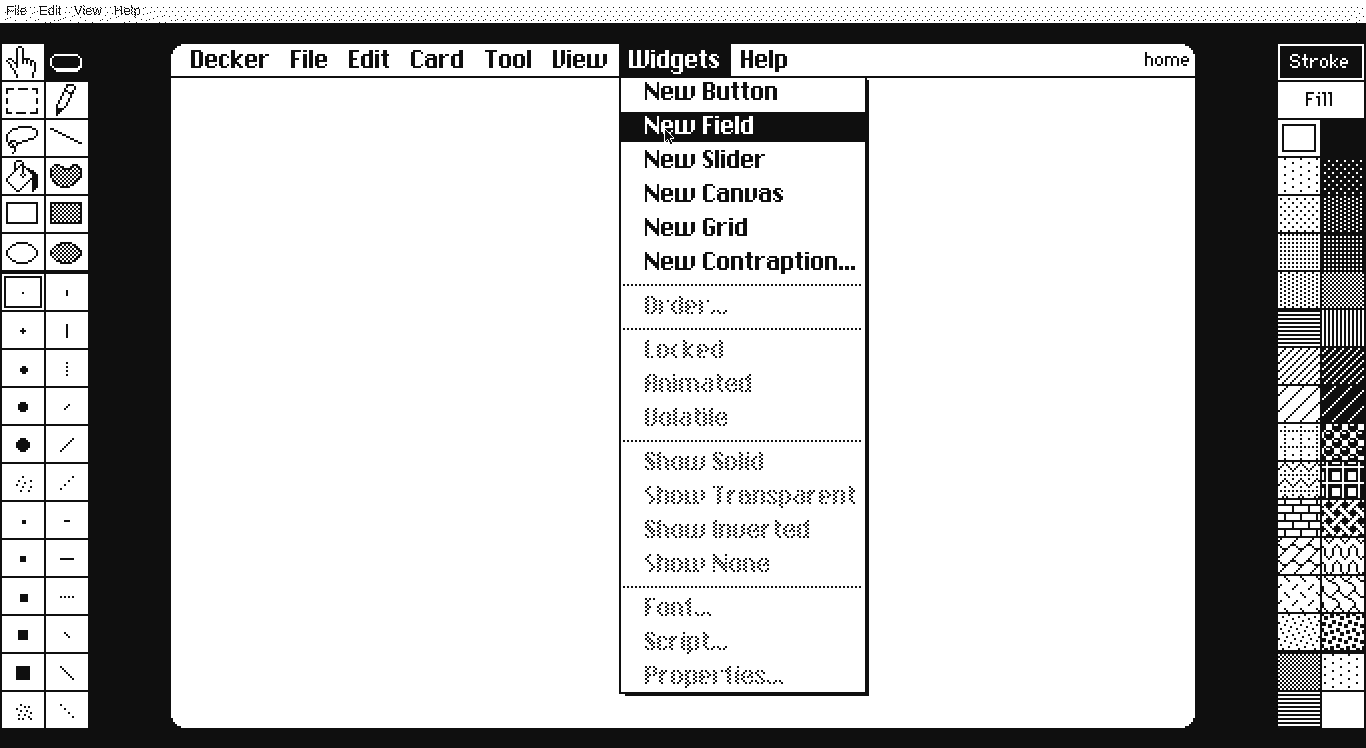Two things, (1) a card for a small built-in editor: https://codeberg.org/woodring/decker.editor
Link to the deck: https://codeberg.org/woodring/decker.editor/src/branch/main/editor.deck
Cut and paste for the editor card:
EDIT: I’ve removed the paste for the card, because I can’t be bothered to update changes in two places… that’s what version control is for. Go to the repository if you want the latest.
And (2), an xdc module for decker-xdc - which takes some explaining: https://codeberg.org/woodring/decker.xdc
See the README.md - the short version, WebXDC allows Decker to be made into multi-user/player decks over supported messengers, like DeltaChat (what I use). The module makes it easier to use WebXDC inside of a decker-xdc deck.
Direct link to the deck & module: https://codeberg.org/woodring/decker.xdc/src/branch/main/xdc.deck
Direct link to the WebXDC version of the deck (directly runnable in DeltaChat): https://codeberg.org/woodring/decker.xdc/src/branch/main/xdc.xdc
The link to the original decker-xdc is here: https://codeberg.org/rtn/decker-xdc.git and I’ve updated it to decker 1.60: https://codeberg.org/woodring/decker.decker-xdc
WebXDC is here: https://webxdc.org/
DeltaChat is here: https://delta.chat/en/



